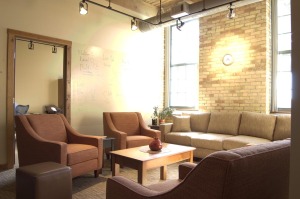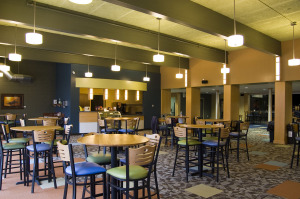
by Ryan | Dec 8, 2014 | Design News
Every industry has their own language. Words that aren’t often used in everyday conversations are used to describe conditions within the industry’s “lingo”. It is important we don’t confuse our customers, but sometimes we do when we use design jargon.
Here are some of the reasons why:
When describing the slant or a floor or ceiling surface, we use the word “cant”.
cant
/kant/
Noun: cant; plural noun: cants
A slope or tilt.
“The outward cant of the curving walls”
Synonyms: slope, slant, tilt, angle, inclination
Then the customer asks, “What can’t I do?”
When we are describing the brightness of a light source, we use the word “lumens”.
lu·men
/lo͞omən/
Noun: lumen; plural noun: lumens; symbol: lm
The SI unit of luminous flux, equal to the amount of light emitted per second in a unit solid angle of one steradian from a uniform source of one candela.
The customer says, “Well of course we are humans and I can see that it is not bright enough!”
We describe a built in seat as a “banquette”.
ban·quette
/baNGˈket/
noun
An upholstered bench along a wall, especially in a restaurant or bar.
The customer says, “We probably aren’t going to rent out the office for banquets.”
Describing a detail in a granite wall, we may say “kerf”.
kerf
/kərf/
Noun: kerf; plural noun: kerfs
A slit made by cutting, especially with a saw.
The customer says, “Sorry, I didn’t mean to be rude.”
When we are describing the durability of a flooring material, we say “P.S.I.”.
P.S.I.
An abbreviation for Pounds per Square Inch. It is a unit of pressure or of stress. It is the pressure resulting from a force of one pound-force applied to an area of one square inch.
The customer says, “I love that show, especially the LA version.”
r.o.i. Design is committed to providing the best possible customer experience and we vow not to intentionally confuse anyone with design jargon!

by Ryan | Dec 8, 2014 | Church Design, Designing Public Areas, Interior Design, Project Management
Schools, churches, foundations and other non-profit organizations need design as much as ‘for profit’ companies. But there is a difference:
- Non-profits are making legacy decisions; what they do in their organization has an impact beyond current staff tenure.
- They typically have to raise funds for a project alongside designing the project.
- The process in design and project management is slighting more “hands on”.
- And it always involves processing information with a larger group of people, i.e. a committee and volunteers.

We worked with non profit Colossian Forum to design their new offices.
r.o.i. Design has experienced some methods and processes that are very helpful when working with non-profit organizations.
1. Helping the customer “see” designs
Most of the time the representatives of an organization are not experienced in developing designs, planning buildings or remodeling. Their only frame of reference might be their own home improvements. That means it is important to use as many visual tools as possible to describe designs and process; tours of other facilities, photos of other facilities and renderings of concepts prior to hard lining a design.
2. Managing expectations
All jobs start with the budget, but in these cases it is even more critical. Design professionals have to understand the resources available before designing begins.
The organization needs to understand the included steps to design. Laying out an overall schedule is helpful as well as establishing a habit of creating meeting minutes.
Technology is making sharing files much easier so information can be updated in real time.

Cafe at Life Stream Church in Allendale, MI
3. Advocacy
It is not uncommon for design professionals to act as facilitators and advocates for their clients as the design is priced and bids start coming in. Being able to maintain design intent and still meet budgets is crucial. A group of people from the organization was charged with executing work and have shared their excitement and ideas with the broader group. Being able to help them “deliver” on that promise is part of the job.
4. Philanthropy
Building trust between the organization and the design team is a necessary element to working with non-profits. That may require some above and beyond involvement or participation in their activities.
Demonstrating an understanding of giving and how it furthers the mission of the organization establishes a common ground. A building or remodeling project is an opportunity to get people involved and teach others the lessons of philanthropy.
r.o.i. Design has had several non-profits as customers, including Grand Valley State University, Meadow Brook Medical Care Facility, Grand Rapids Child Discovery Center, Spring Hill Camp, Colossian Forum, Grandvue Medical Care Facility, Theological Book Network and Wesleyan Conference West Michigan.
We have been pleased to work for several churches, including Life Stream (Allendale, MI), Crossroads Wesleyan (Imperial, Nebraska), Kentwood Community (Wyoming, MI), Hope Reformed (Holland, MI) and Sonrise (Ft. Wayne, IN).




